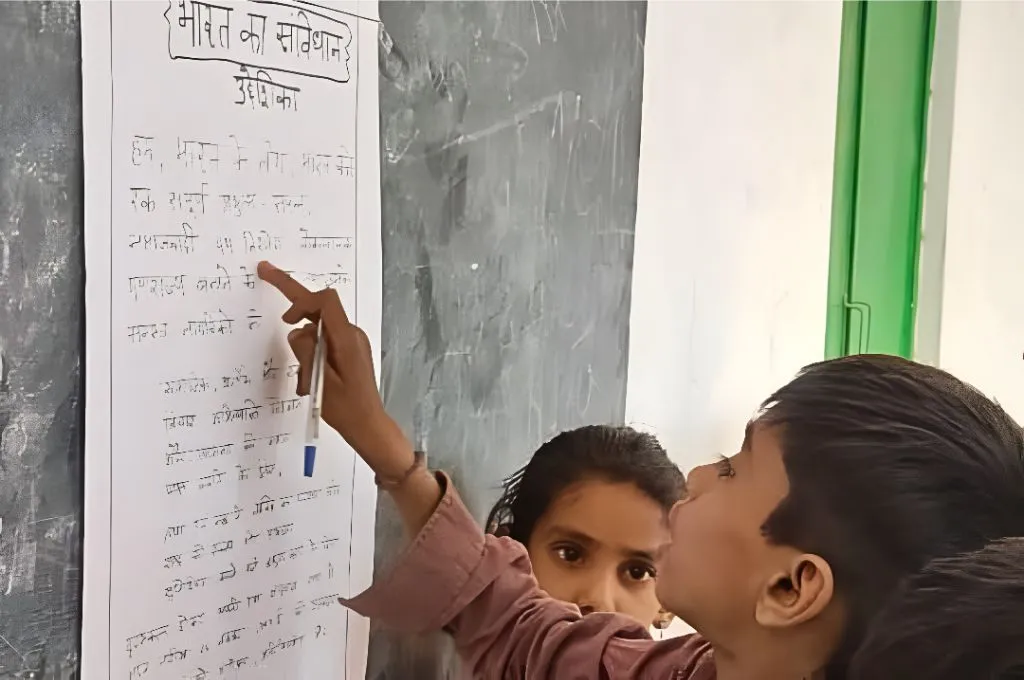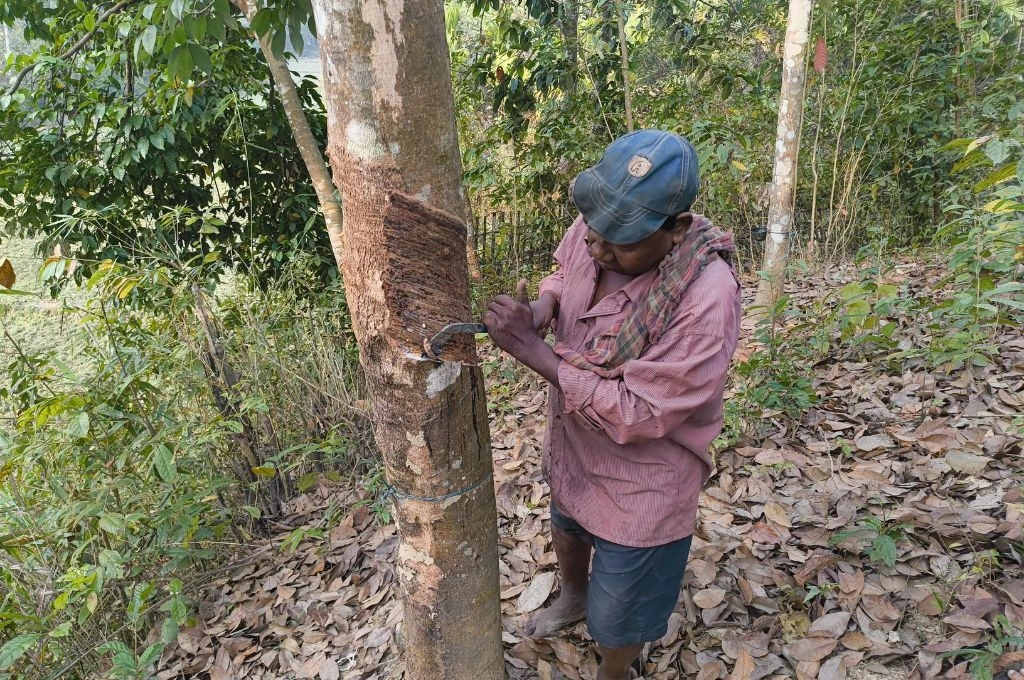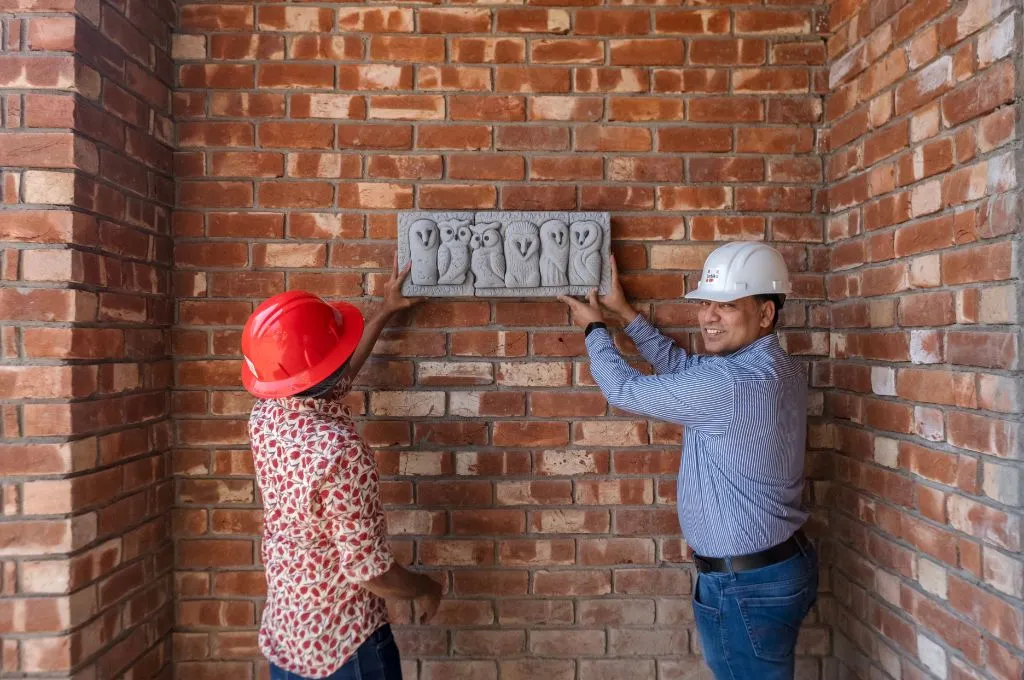The Irulas, one of the six particularly vulnerable tribal groups (PVTGs) living in Tamil Nadu, are the state’s second largest Adivasi community. Primarily residing in northern Tamil Nadu, the Irulas have historically relied on the forest for a living, practising the collection and gathering of non-timber forest products (NTFPs), hunting, and farming. This has seen a shift over the years—while some people continue to farm, many now work as daily wage labourers in townships such as Kotagiri, Coonoor, and Udhagamandalam (Ooty).
The Irula community has a rich folk tradition. The Malanadu or Maladesa (hilly region) Irulas, a sub-clan I interacted with, have many folk songs, dances, legends, and rock paintings. This folklore portrays the intricate and complex relationships that people share with one another, nature, and the various animals they are surrounded by. These stories offer unique cultural perspectives on human and non-human interactions and also play an important role in preserving the culture of the Irula people for future generations.
This photo essay focuses on a play called Doddu Aatam (Gaur Play) performed by the Irulas in the Kotagiri region of the Nilgiris. The play has been passed down through generations via oral narratives. However, it lacks proper documentation and is currently in danger of extinction.
The play that this essay focusses on was performed on May 29–31, 2023 at Mettukkal village, and I documented it as part of the Nature-Culture Fellowship by the Wildlife Conservation Society-India.
The performance
Doddu Aatam is a traditional community performance that mimics the movement of the Bos gaurus or the Indian gaur. Gaurs are called doddus in the Irula language, a vernacular dialect that is a mix of Tamil, Kannada, and Malayalam. In Kannada, dodda means ‘big’. The gaur is a large animal, so the Irulas call it doddu.
The play is a customary practice accompanied by traditional rituals that are believed to promote the community’s well-being and prevent misfortunes such as famine, disaster, and serious health issues within the community. Earlier, the play was performed in every Irula and Kurumba Adivasi village. But its popularity has waned. Currently, only two Irula villages in Kotagiri—Vakkanamaram and Mettukkal—continue to perform it.
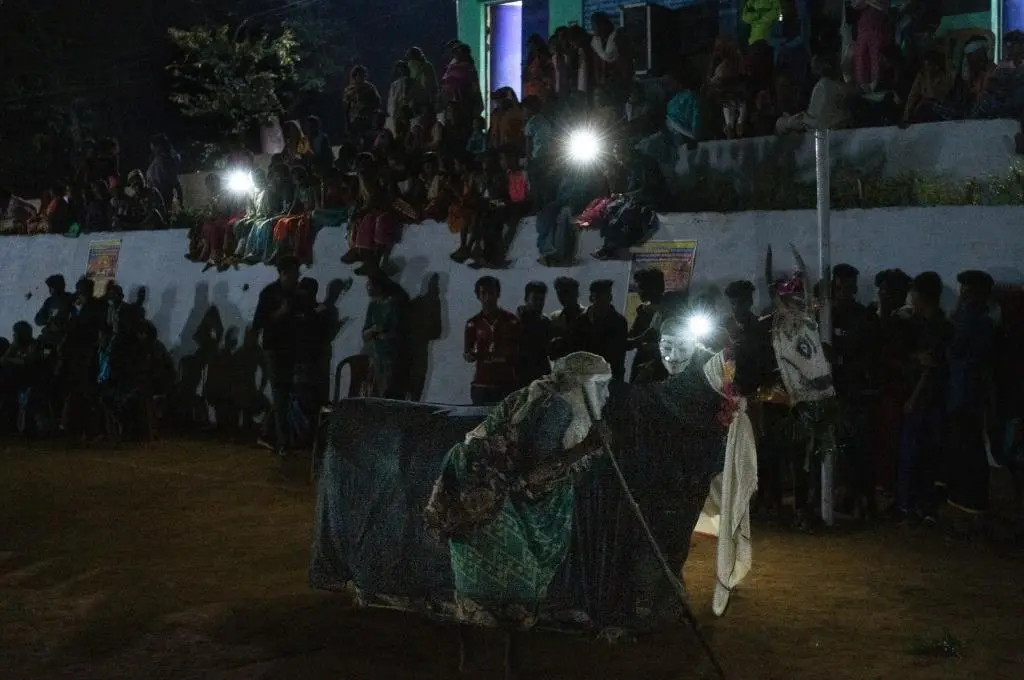
In both villages, the play is performed over three nights. Instrumental music and traditional dance play a major role. During these three nights, some people from neighbouring Irula and Kurumba hamlets volunteer to help out with its preparation. The audience of the play includes people from the host village and those surrounding it.
Durai, a daily-wage worker in tea estates around Mettukkal and small-scale coffee farmer, says, “Doddu Aatam has been in practice for many years. It used to be performed for seven nights during the time of Pongal, a multi-day harvest festival, with the third day dedicated to cattle. Now, the play has been shortened to three nights. The characters include a gaur, an Irula man, an Irula woman, a tiger, a horse, a white man, a white woman, a clown, and forest officials. Although the play features a variety of characters, our ancestors gave it the name Doddu Aatam because they believed that the gaur represents the merging point of the forest (nature) and humans (culture).” When asked why they conduct the performance at night, he explains, “The play is most beautiful when performed at night since we can’t accurately recreate the characters; we use rough costumes, and the darkness helps us and hides our mistakes.”
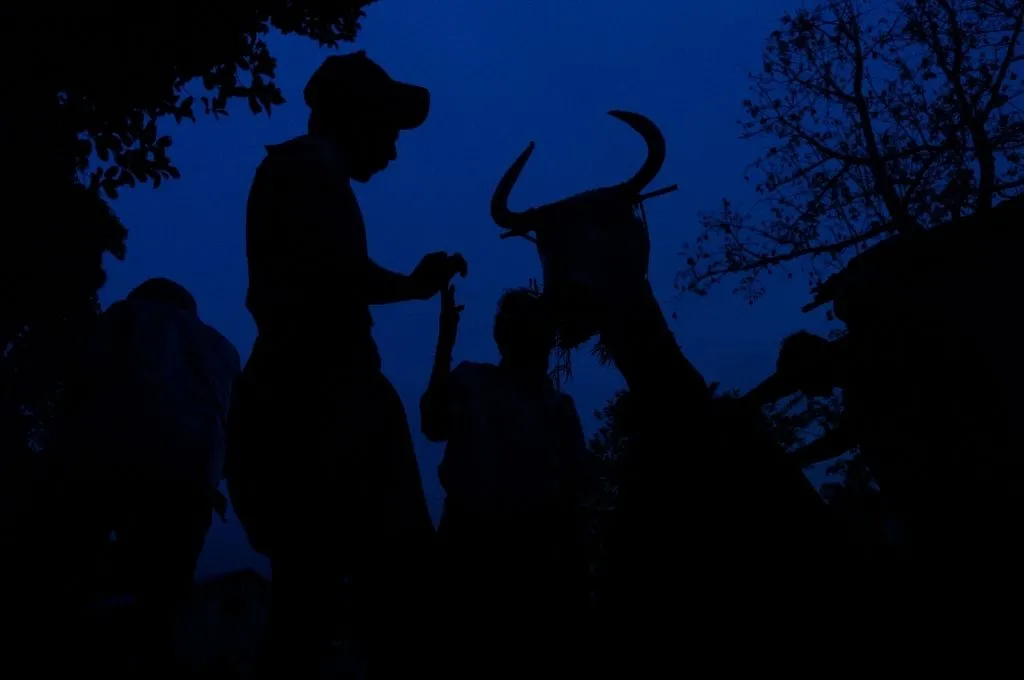
The play
The three-night play revolves around the theme of protecting gaurs from predators.
On the first night, the tiger tries to attack the gaur. When the Irula couple notices this, they attempt to strike it with a stick, but the tiger attacks them in turn. On the second night, the tiger targets a white couple on horseback but flees when the white man points his rifle at it. The tiger finally attacks the gaur on the third night. Distressed, the Irula couple asks the white man for help, but to no avail. Finally, they approach the forest officials, who shoot the tiger dead. The tiger’s body is left as is, but the deceased gaur’s skin is peeled off. The different actors of the play sit on the skin and perform traditional rituals that are not disclosed to outsiders.
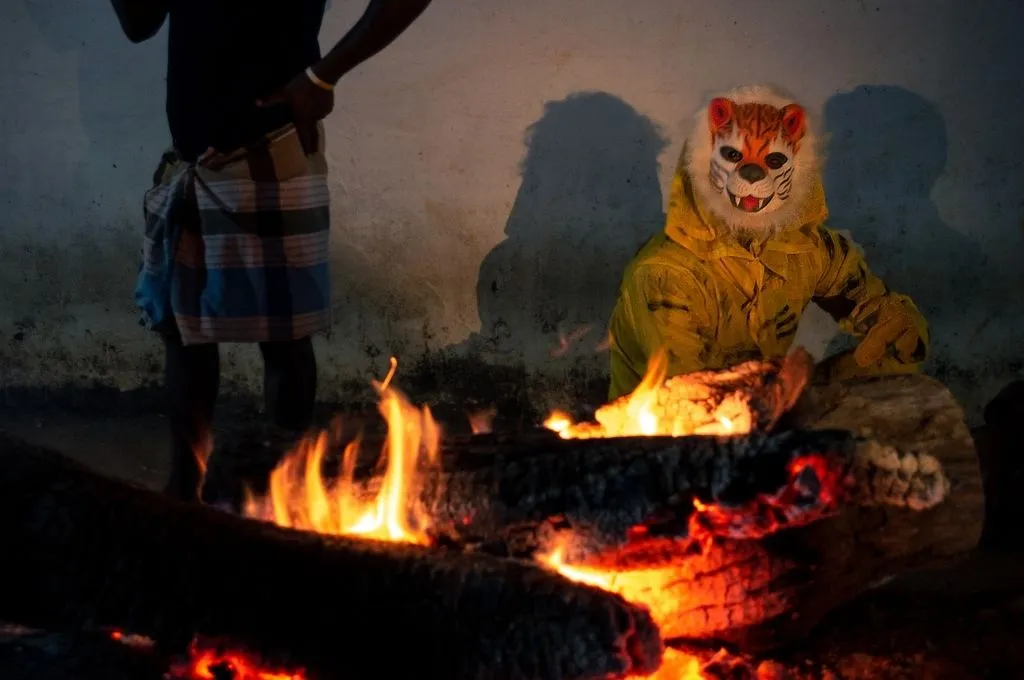
On the fourth morning, the performers burn the costumes and materials used in the play. They dispose of the ashes in a nearby river, and then take a bath and visit a neighbouring temple. No outsiders are permitted to observe any part of the rituals on the fourth day.
During the three days of the performance, the actors are prohibited from entering their homes, as the costumes and materials they use are considered desecrated. They are provided with a separate space for the duration of the performance. They can enter their respective homes only after visiting the temple on the fourth day, as it is believed that they have discarded the community’s bad fate in the river.
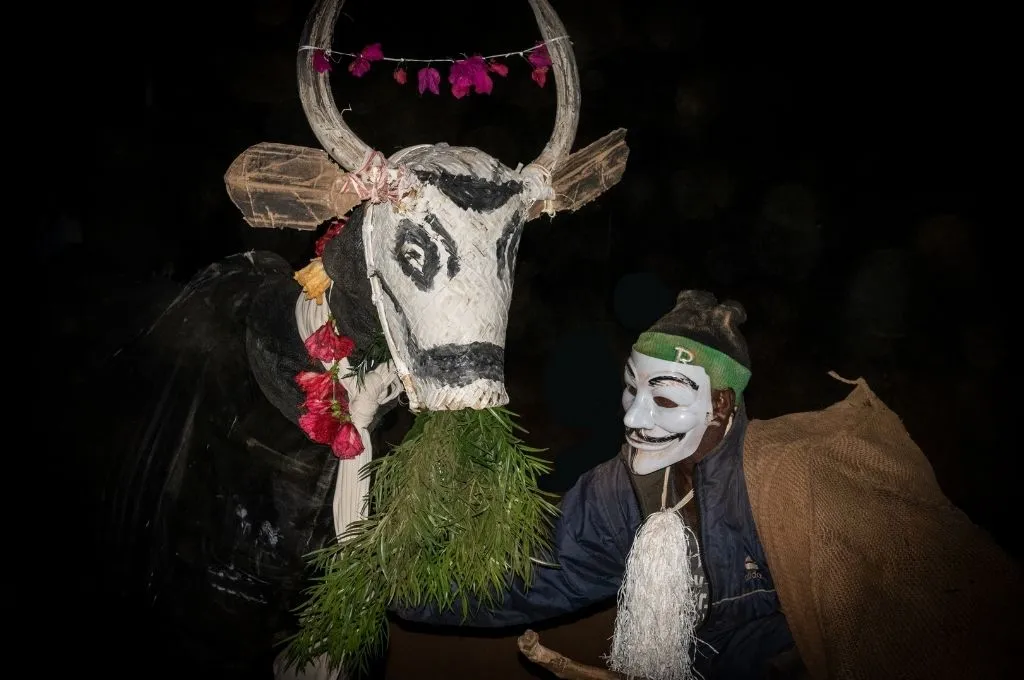
The significance of Doddu Aatam in the community
Rangasamy, a small-scale tea and coffee farmer from Mettukkal village, says, “Doddu Aatam is performed to prevent bad things from befalling the community. In the past, whenever there were certain health problems in the village, people thought that by staging a play like this would bring things back to normal. We believed that the village’s misfortunes will come to an end once we burn and dissolve all of the costumes and other items used for the play.”
They also believe gaurs to be the domestic cattle that their ancestors originally raised. Vellai, an 85-year-old Irula elder from Vakkanamaram, says, “Earlier, every household used to raise a significant number of cattle, perhaps more than a hundred. So, people weren’t able to take care of them and they lost count as well. Some of the cattle that were released for grazing in the morning didn’t return to the patti (a big cowshed without a roof). These cattle began to graze and roam freely inside the forest, where they later mated with wild buffaloes and gave birth to gaurs. We believe this is how gaurs originated. As they roamed the forest, the tiger became their predator. Our ancestors felt they had mistreated the cattle. So, they started performing Doddu Aatam to atone for their sin of not taking care of them.”
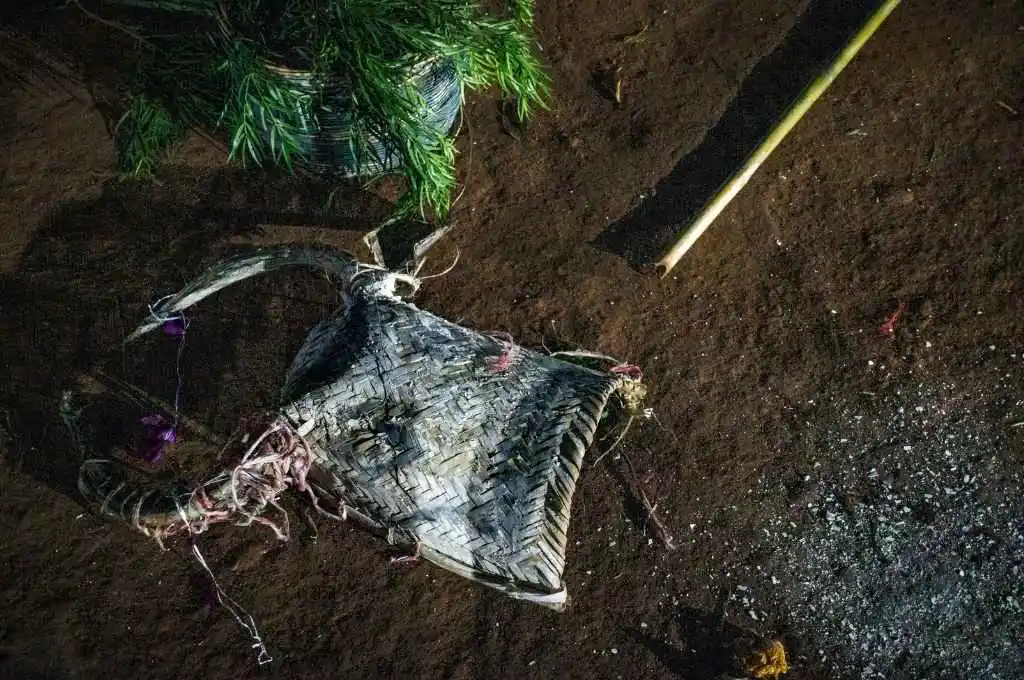
Earlier, Emme Aatam—a play similar to Doddu Aatam—was also performed in the Irula villages of Niligiris district’s Masinagudi region. But it has become extinct. Chithra, an Irula Adivasi woman from Anaikatty village who works as a research assistant at the Tribal Research Centre, Udhagamandalam, shares, “Emme Aatam was performed to raise awareness of the wild animals within the forest, because people used to be more dependent on the forest. But, at present, none of the villages in the Masinagudi region practise this performance.”
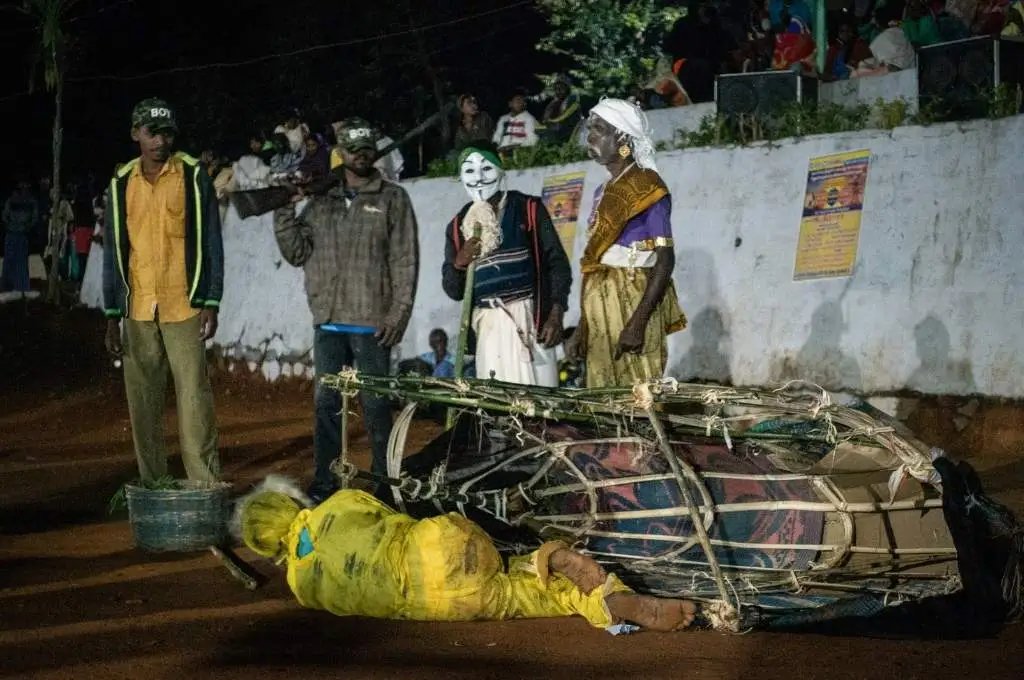
The future of Doddu Aatam
Raman, a member of a local youth association called the Palrayan Youth Club and the community representative for Mettukkal’s Doddu Aatam, mentions, “Each village would put on the Doddu Aatam play for three years in a row, followed by a break for a few years before resuming. But due to limited resources and a lack of interest among people, most of the villages have stopped performing it.” He continues, “The elderly are occupied with looking for means of livelihoods and are unable to share information about the community’s customs with the younger generations. They feel that if they stop working for one day, they won’t be able to support their families.
Since no knowledge is being passed down, people’s interest in such traditions is diminishing.” Raman concludes, “Currently, only we [Mettukkal] and Vakkanamaram carry on the performance. This year, even Vakkanamaram couldn’t perform the play. We are doing it for the second year in a row. However, we are doubtful about our ability to perform it in the future.”
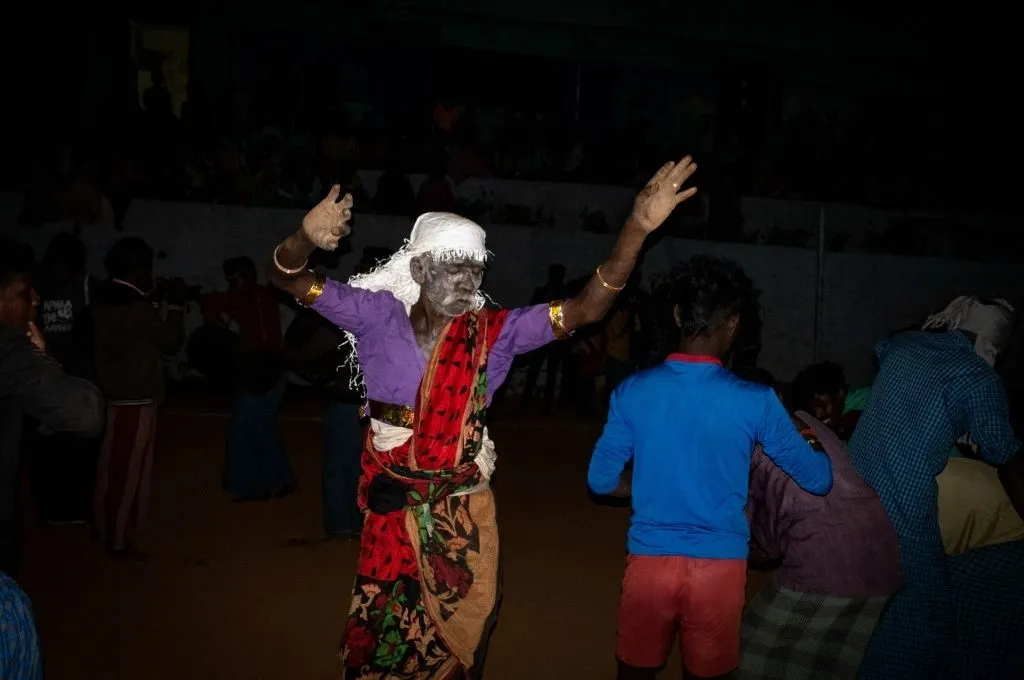
Traditional performances such as Doddu Aatam not only showcase the community’s rich culture but also serve as repositories of knowledge. But due to limited resources, such traditional performances are rapidly disappearing. As human–wildlife conflict increases, it is crucial to encourage and preserve such performances and stories that reflect the lives of humans and animals that share the same space.
Dr Madhuri Ramesh from Azim Premji University contributed to this article.
—
Know more
- Read this interview for a brief history of the discrimination faced by the Irula people.
- Read this article to learn about the lives of the Irula people in a resettlement colony in Tamil Nadu.



